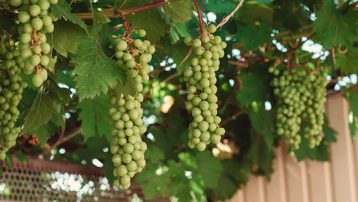Last updated on December 15th, 2023 at 07:52 am
The Japanese Barberry Bush (Berberis thunbergii) is a great little colorful plant that fits into almost any type of landscape design. Most Barberry plants will thrive in USDA Zones 4-9.
A nice shiny burgundy almost red plant that works well in a rocky Xeriscape area or a more Asian or formal type of landscape. They do need regular watering even after they have become established. It is best to have its watering system or water more often by hand during the hot mid-summer months.
It does produce a small pinkish bloom but is not showy the plant is used primarily for its color almost year-round.
They grow to about 3 maybe 5 ft. tall within 5-6 years after initial planting. It is a short shrub plant that can be used as a small hedge.
The Pygmy Ruby Barberry™ Bush
This Barberry shrub is from Monrovia.com. Nice-looking deep red leaves cover this commonly dense, round type shrub. Not much maintenance and very little trimming are needed to maintain its neat, dwarf-like pattern, making it a good choice for a low-maintenance mass-planting shrub, or a short-style hedge. It will lose its leaves in late fall.
The Japanese Barberry (Berberis thunbergii “Golden Ring“)
Another great-looking Japanese Barberry is the Golden Ring one. A nice burgundy color during fall, winter, and early spring. The contrasting color makes it stand out among the other green shrubs. It turns into a nice green shrub when summer comes around.
Where to Place This Bush
Plant them in full sun but they can tolerate some shade. Make sure they have good soil that drains well. Best to let them grow to their natural height and width. Trim in late fall for a better-looking plant.
Problems with the Japanese Barberry Bush
It is susceptible to spider mites and verticillium wilt. Spraying with a good insecticide will kill the spider mites. You can also water from the top down to keep spider mites from infesting your Barberry bush.
However, verticillium wilt is a soilborne fungus, and best to spray with a fungus spray at the first sign of trouble. The symptoms are leaves dropping prematurely and yellow scorched-looking leaves.
Barberry Bush works best in USDA zones 4-9. Find your gardening zone here.
More great shrubs for the Southwest here.






